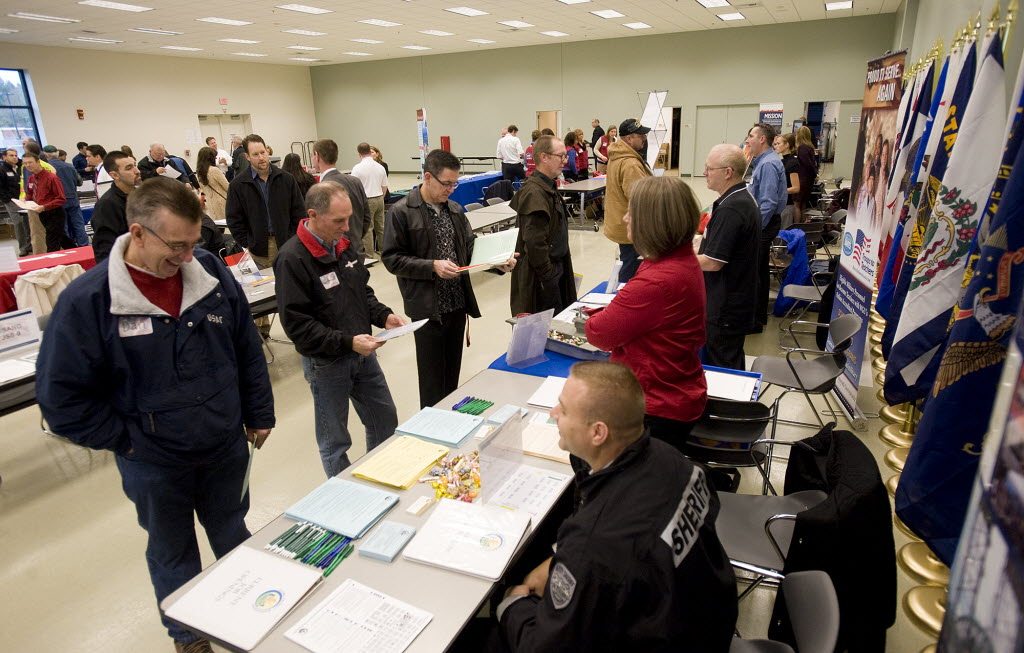Washington’s steadily improving economy has a downside for thousands of long-term unemployed workers, who will no longer be eligible for benefits that were extended to up to 99 weeks in the depths of the Great Recession.
Effective April 21, the state will eliminate one unemployment benefit program and begin phasing out another, with the net effect of eliminating payments after 73 weeks. Both changes are in response to triggers embedded in the law that curtail benefits in response to shrinking unemployment rates.
The state Employment Security Department projects that 661 unemployed Clark County workers will lose benefits effective April 21, and another 605 residents will be cut from the program between April 22 and June 23.
Since July 2008, some 4,239 Clark County residents have exhausted all unemployment benefits, the Employment Security Department says. That number is expected to grow to about 5,000 or more by the end of April, according to Scott Bailey, regional labor economist for the department.
The reductions in jobless benefits are triggered by improvements in the state economy. But while the economy is brightening locally, Clark County’s unemployment rate of 11 percent in February remains far greater than the statewide average.
‘The right direction’
Vancouver resident Eric LaBrant, 31, understands all too well what it feels like to be on the outside of the labor market, worrying that his jobless benefits would end before he got a another job.
Last May, he was laid off from a job as a debt collector at a Wells Fargo call center. A single parent, he cut some household expenses. “There’s no extra money for gas, no trips to the beach,” he said. “There’s no money for going to the movies.”
The $350 weekly unemployment insurance check he received “was pretty critical,” he said, even as he scrambled to scrape together additional income.
About four weeks ago, LaBrant got some good news: He landed a temporary job in the accounting department of a Portland company. “It’s definitely a step in the right direction,” he said.
Other job seekers haven’t been as lucky. Although the state’s unemployment rate improved to 8.2 percent in February, many haven’t found jobs and now face going without a key safety net.
Statewide, the Employment Security Department estimates that approximately 12,500 unemployed workers will lose benefits April 21, and they’ll be joined by another 11,000 workers in the subsequent eight weeks.
“We are at a difficult point, where our unemployment rate is greatly improved, yet still relatively high,” said Employment Security Commissioner Paul Trause in a news release. “Losing up to six months of benefits will make the unemployment situation a lot more urgent for thousands of families.”
‘Well below’ capacity
Sheryl Hutchison, spokeswoman for the Employment Security Department, encouraged long-term unemployed workers to take advantage of retraining programs and free services to help them prepare for a return to the workplace.
“If you are unable to find a job for a year or more, there are probably underlying issues you need to work on,” she said in a conference call with news reporters.
However, Tim Duy, an economics professor at the University of Oregon and director of the Oregon Economic Forum, said the problem isn’t structural, where people are unemployed for a long time because they simply don’t have the skill set the economy needs.
Most economic indicators — including stagnant wages and the low ratio of job openings to job seekers — show that an overall lack of demand for goods and services is keeping workers on the sidelines, according to Duy.
What concerns him and some other economists, he said, is that the U.S. economy is operating “well below where we think it should be if resources” — labor and capital — “were fully employed.”
Duy said a major concern is to what extent casting the weak economy as a problem of skills becomes a self-fulfilling prophecy.
The longer policymakers accept that argument, he said, the longer people will remain out of the labor market and thus see their skills continue to deteriorate.
Rates drive changes
In Washington, two separate measures simultaneously affected two different programs for long-term unemployed workers.
Regular jobless benefits last up to 26 weeks and are paid by the state’s unemployment trust fund. As the economy deteriorated in 2008, the federal government launched and then expanded an emergency unemployment compensation program that now has four tiers of benefits. After April 21, that program in Washington will shrink from four tiers that pay up to 53 weeks of additional benefits to three tiers paying up to 47 weeks. That’s because the state’s three-month average unemployment fell below 8.5 percent.
Unemployed workers who are already set up to receive the fourth tier of emergency benefits by April 21 can continue claiming benefits until they run out or until the program ends on Dec. 29, whichever comes first.
A second unemployment program, called extended benefits, takes effect after emergency benefits expire with up to 20 weeks of additional benefits. But that program also was designed to expire as the economy improved. It will be eliminated on April 21 as a result of the state posting an unemployment rate that is less than 10 percent higher than in the same period three years ago.
Washington residents receiving unemployment from the state of Oregon are not affected, since Oregon’s economy hasn’t rebounded enough to trigger a reduction in benefits.
Although Washington’s unemployment rate has improved, LaBrant — the Vancouver resident who only recently landed a temp job — said it just doesn’t feel like that to him and a lot of other job seekers he knows.
The U.S. “is back to (gross domestic product) growth, so on paper and in theory, it’s recovering,” he said. However, he added, “jobs have not bounced back so much. Companies are still hiring, but it’s one of those two-steps-forward-three-steps back scenarios.”





